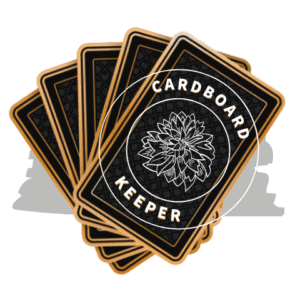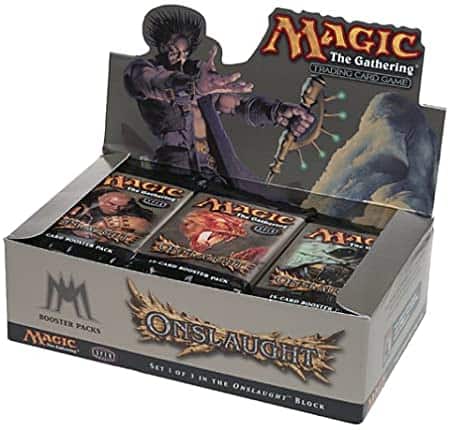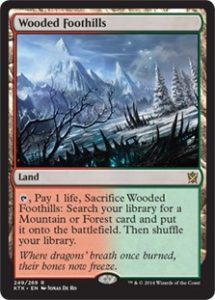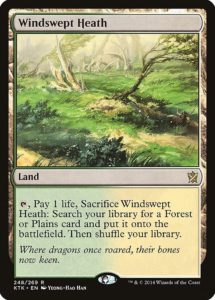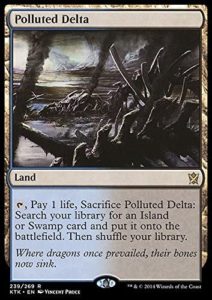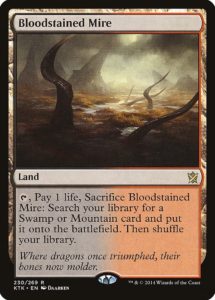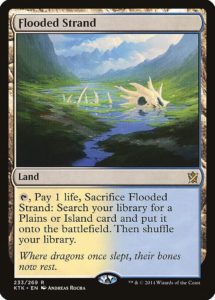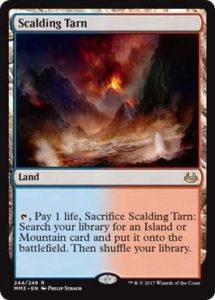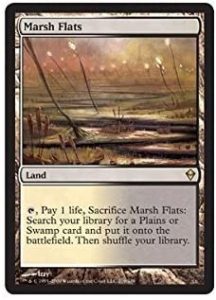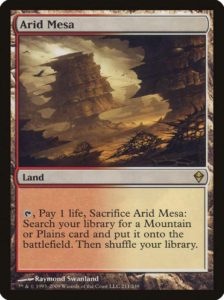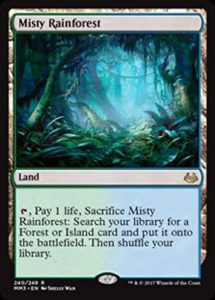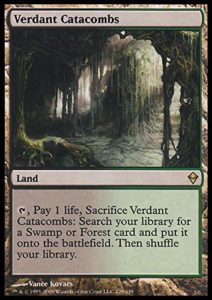When I started to play Magic The Gathering’s older formats everyone told me I would need to buy fetchlands. But at that time, nobody told me why are fetchlands so expensive and what to do about it.
As a whole, fetchlands are expensive due to their high demand from Magic The Gathering players but low printing supply. Fetchlands are played in every Magic format they are legal which creates a large need for them, resulting in higher prices. Reprints often decrease the prices of fetchlands.
As more and more players start to play Magic The Gathering the demand for fetchlands will naturally increase along with their prices, but what about the supply of fetchlands?
There are a few things you need to know before you can fully understand why fetch lands are so expensive and lacking in supply.
Not entirely confident on what a “Fetch Land” is? Before reading the rest of this article, you may want to check out my beginner’s guide to everything you need to know about MTG Fetch Lands to get started – What Are Fetch Lands? MTG Fetch Lands: Types, Rules, List
What Sets Are Fetchlands In?
In total, fetchlands are in 5 sets. The 5 onslaught fetchlands were printed in the sets “Onslaught”, “Khans of Tarkir”, and “Fate Reforged”. The remaining 5 fetchlands were printed in “Zendikar” and “Modern Masters 2017”. All fetchlands were printed as Expeditions in the “Battle for Zendikar” set.
The low supply of fetchlands now starts to make a little more sense.
Throughout Magic the Gathering’s entire history the fetchlands have only been printed in 5 sets.
6 sets if you count their appearance as Expeditions in the Battle for Zendikar, 2015 set – but since they only appeared as extremely rare lottery cards in booster packs, most players don’t consider that to be a full printing.
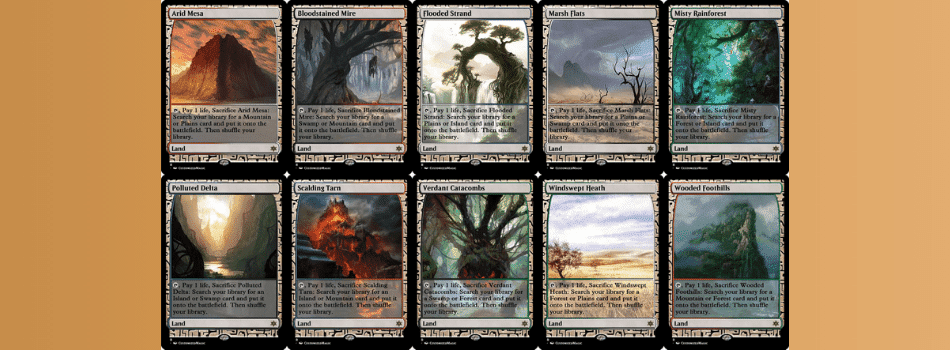
Even then, the idea that fetchlands have been fully “printed in 5 sets” is questionable and somewhat misleading.
Keep in mind, that only half of the complete set of 10 fetchlands were printed in each of the 5 sets I mentioned above.
The 5 Onslaught fetchlands only appeared in 3 of the sets, one of which – Fate Reforged, had a modest print run due to it being a smaller Magic The Gathering card set.
However, it gets even worse though when we look at the 5 Zendikar fetchlands.
These fetchlands have only ever been printed in 2 sets, their namesake set – Zendikar and Modern Masters 2017. The issue here is that Modren Marsters 2017 wasn’t a standard set – literally.
Modern Masters 2017 was printed in limited quantities due to it being an irregular set – not designed for Magic’s Standard format, but instead, designed as a set for collectors at a higher price point.
How much more expensive was it? You see how much it would cost you to buy a box of 2017 Modern Masters below.
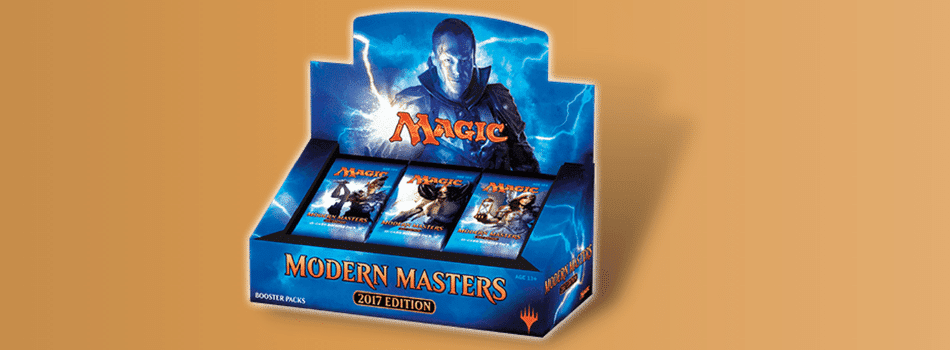
That means, if you don’t consider Modern Masters 2017 to be a satisfactory print run, then the Zendikar fetchlands have only ever had a single large printing.
This fact is reflected in their prices.
If we compare the prices of the lesser printed Zendikar fetchlands to their Onslaught counterparts, we can see how fewer printings of these cards have created a difference in their average price.
Fetchland Price – Onslaught (2021)
Fetchland Price – Zendikar (2021)
Like most expensive cards in Magic The Gathering, the high price for fetchlands is due to their scarcity.
Even though these lands are used in almost every Magic format, Wizards of the Coast (Publishers of Magic: The Gathering) appear to be averse to printing these much-needed lands for its growing player base.
In recent history, Magic The Gathering only appears to tease players with a chance to obtain fetchlands by offering players the opportunity to purchase premium card packs that might contain a fetchland.
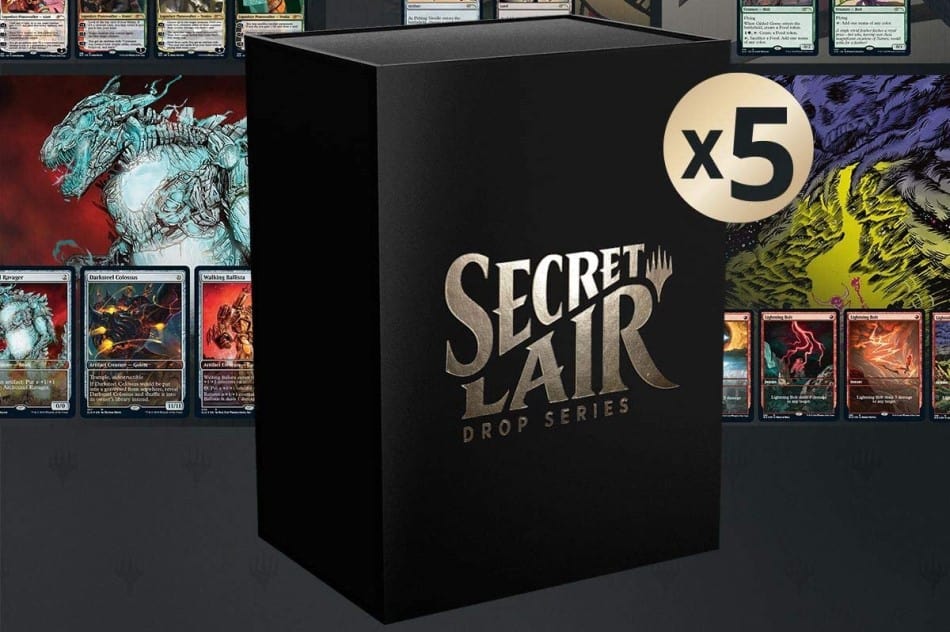
A recent example of this was Magic The Gathering selling their “Summer Superdrop Bundle” Secret Lair product directly from their website for approximately $165.
When you purchased one of these bundles, you would receive a single “randomly chosen Enemy Fetch Land”.
This somewhat predatory behavior by Wizards of the Coast to leverage the high demand for fetchlands and proactively increase the artificial scarcity of the cards – “artificial“ since Wizards of the Coast could print these cards on mass at any time – has brought up concerns about legality and gambling with regards to MTG.
Also Read: Is Magic The Gathering Gambling? (Featuring Legal Cases)
In any case, unless we see the return of fetchlands to a standard set printing in the near future, the price of fetchlands will continue to steadily increase over time as demand for these cards rises.
Most Expensive Fetch Lands
On average, the most expensive fetch land is Scalding Tarn. In older formats of Magic The Gathering, blue decks are played more which increases the demand and price of fetch lands that can retrieve Islands. Scalding Tarn has exceeded prices of over $100 per copy, but its price fluctuates.
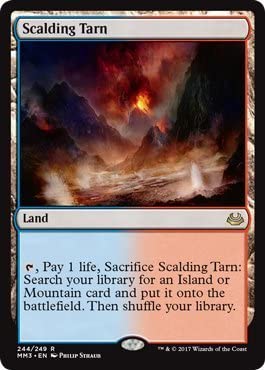
Due to the over-representation of blue decks in older formats of Magic The Gathering, Scalding Tarn and other blue fetch lands, often are more expensive than their non-blue counterparts.
Playing blue decks in older MTG formats can significantly increase the price you’ll need to pay to build your deck, especially if you plan to pay with 3 colors of mana or more.
There is a good chance if you are playing 3 color blue deck in Magic’s older formats that you will want to play 6 – 12 fetch lands.
For example, Playing a “Jeskai” deck (Red, Blue, and White) could see you playing:
- 4 Flooded Strands
- 4 Scalding Tarn
- 2 Arid Mesa
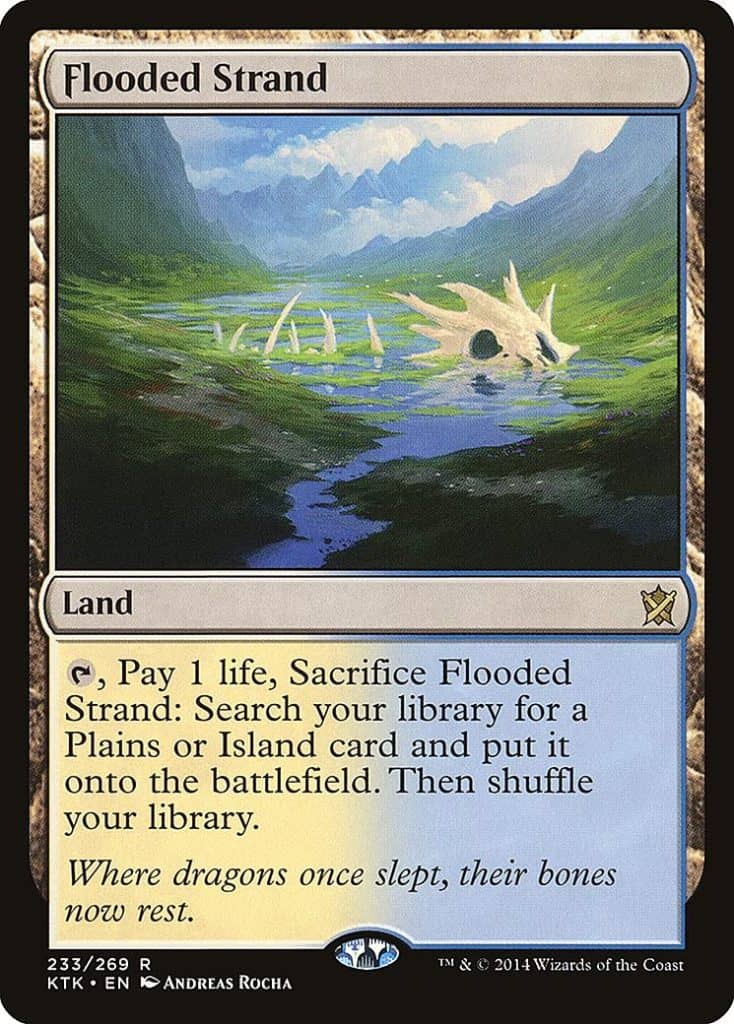

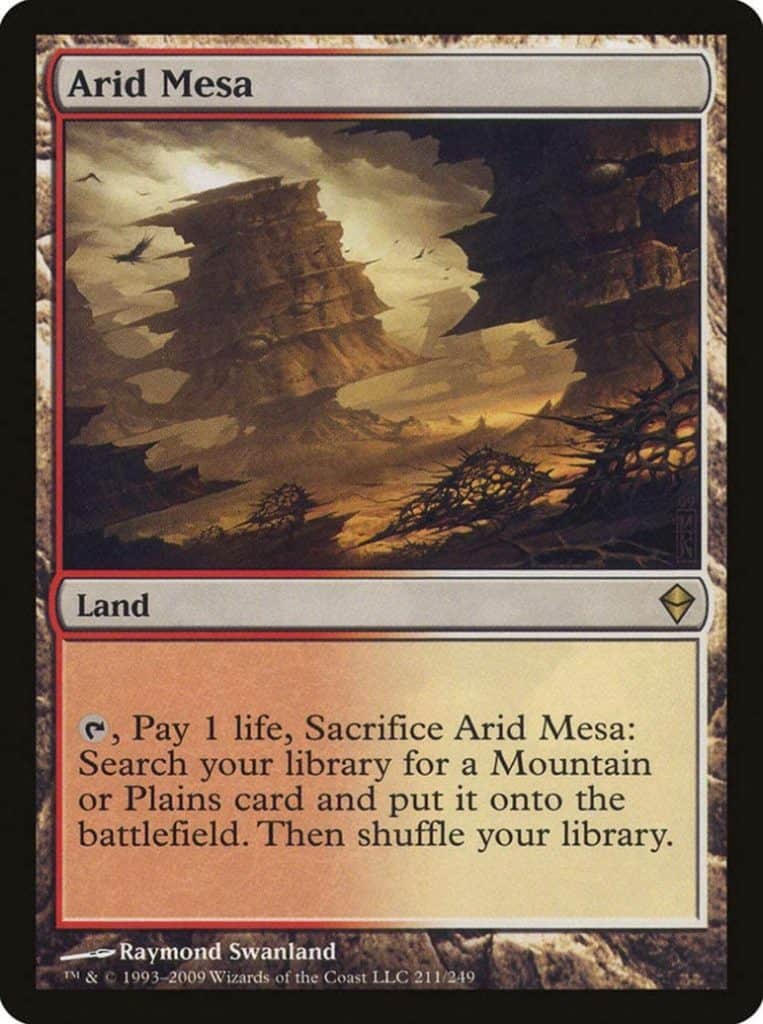
The cost of just these 12 cards in your 60 card deck can set you back over $500!
Are Fetch Lands Worth It?
As a whole, fetch lands are worth it. Fetch lands see play in most Magic The Gathering decks across all formats where they are legal. Fetch lands add consistency to a deck’s mana base and also provide a wide range of other benefits depending on the type of deck they are placed in.
Despite their seemly ever-increasing price, fetch lands will always have a place in Magic’s older formats such as Modern, Legacy, and Commander.
Even if you don’t play any of these formats currently, it’s hard to imagine you won’t at least try them at some point if you plan to play Magic long-term.
If you plan to just dip your toe into some of these older formats, it probably not a good idea to go out and drop a large amount of money on getting your full playset of fetch lands right away.
Instead, test the format with some of the monocolored decks available in that format, or better yet, borrow a deck from a friend first to get a feel for that format – Just because you enjoy Standard doesn’t mean you will enjoy all of Magic’s formats.
That’s what makes Magic The Gathering great though, there are formats for everyone!
If you do find yourself spending a lot of time playing Magic’s older formats and having a good time while doing it, then buying fetch lands is somewhat inevitable.
Most, if not all, of the strongest decks in MTG’s eternal formats utilize fetch lands to some degree.
Because of this, if you are the type of person that enjoys experimenting with different decks and add some variety to your playstyle, then slowly adding fetch lands to your collection over time is a good idea.
I wish I could tell you otherwise, but a frustration I’m all too often run into is, I spot a new fun deck I want to try out and… I’m missing the fetch lands needed to play the deck.
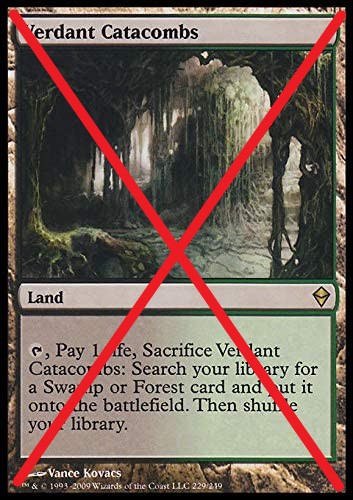
A lot of the time I’ll have access to every other card I need to play the deck, except for the fetch lands.
Can’t you play the deck without the fetch lands?
Sort of… I have tried putting decks together with mana bases that don’t use fetch lands in some of the older formats of Magic, and it can work, unit it doesn’t.
There are few worse feelings playing a match of Magic and your one spell away from winning the game… then you notice that you don’t have enough colored mana sources to cast that all-important spell.
Why? Because you didn’t have a fetch land to go get that Dual Land that would have taken care of this problem earlier in the game.
Having a consistent mana base for decks to operates smoothly becomes essential when playing Magic competitive and fetch lands can provide that for you.
It doesn’t matter how good your spells are, if you don’t have the right mana to cast them, they are useless.
Fetch lands can do more than just give you constant mana. If you are looking for a more comprehensive look at all the things fetch lands can do for you and your deck, check out my other post:
Also Read: Why Are Fetchlands Good? Magic The Gathering [Helpful Guide]
